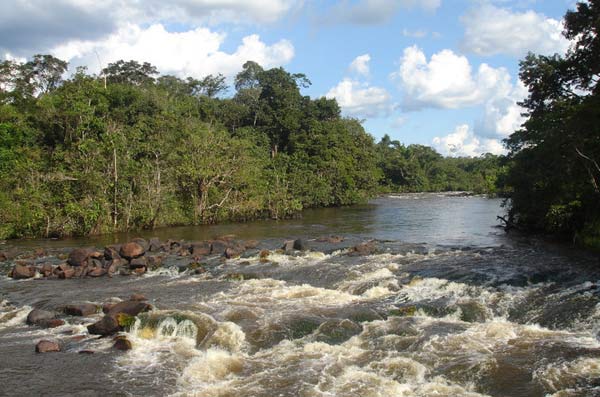Exploring Logging and Road Development in the Amazon Rain Forest

This Research in Action article was provided to LiveScience in partnership with the National Science Foundation.
Despite improved conservation efforts, the Amazon rain forest faces environmental threats from deforestation.
Researchers are investigating deforestation activities and the role played by building roads in the region — finding the answers is no simple task and requires first-hand exploration of the Amazon forests and the roads themselves.
Up for the challenge are the collaborating researchers Robert Walker of Michigan State University, project leader Eugenio Arima (who at the time was an assistant professor of Environmental Studies at Hobart William and Smith Colleges, and is now moving to the University of Texas at Austin), and Ritaumaria Pereira, a doctoral candidate in Geography at Michigan State University.
With support from the National Science Foundation, the team journeyed along the "Trans-Amazon Highway," one of the longest highways in Brazil, to search for loggers and survey links between forest degradation and development (see video below).
Before embarking on the highway, the team met with the local Kayapó Indians who provided key information about logging activity in the lower Amazon basin. The Kayapó once allowed loggers on their land, but after negative consequences, such as land damage and tribal conflict, the Kayapó now support efforts to conserve land.
The 850-mile journey along the Trans-Amazon Highway began at the village of Santarém, where the researchers rented a jeep and headed west to the terminus, the town of Labrea. Along the way, the researchers observed a multitude of wildlife, including a "macaw city" where numerous rare blue macaws buzzed around the researchers.
Sign up for the Live Science daily newsletter now
Get the world’s most fascinating discoveries delivered straight to your inbox.
Deep in the forest, the researchers found an active gold mine, plagued with malaria. The barren landscape of the mine was dry with sandy crevices dispersed throughout — a reminder of what the rain forest could become if it was completely cut down.
Along the Aripuanã River, the team found what they initially set out to discover — evidence of the active logging industry. Numerous logging trucks carrying sawed wood appeared to be coming from the direction of the nearby frontier town of Vila Santo Antonio Matupi. The team attempted to interview the loggers, but such a task is not so simple, as loggers are often armed and suspicious of strangers. Although the loggers were not open to discussions, the team hopes to develop alternative strategies to interview them in the future.
The team continued their journey along the final stretch of the Trans-Amazon, which proved to be the most difficult. Walker explained that the road conditions were particularly wet and isolated. If you were to get stuck, you would have to make sure the windows were shut while you slept, or else jaguars might pay a visit.
Despite the challenges, after nine days the team safely completed their trip. Through their journey, the team located the "logging frontier" in Brazil and learned about the groups that are involved in agricultural development, such as settlers, ranchers and local governments.
They also investigated how sprawling road construction fragments the forest as well.
From those findings, the team determined that certain patterns of fragmentation are especially sustainable. The "fishbone" pattern, for instance, which resembles the bone structure of a fish, offers a solution that merges sustainable development with forest livelihood. In that pattern, the "bone-like" formations represent roads and the space between each road, or "bone," provides space for animal movement and a network of connected ecosystems. That form of forest fragmentation allows for sustainable development if properly planned, and safeguarded.
To learn more about these findings, check out an NSF "Discovery" article and a MSU Alumni Magazine article about the team's trip to the Amazon.
Any opinions, findings, and conclusions or recommendations expressed in this material are those of the author and do not necessarily reflect the views of the National Science Foundation. See the Research in Action archive.










